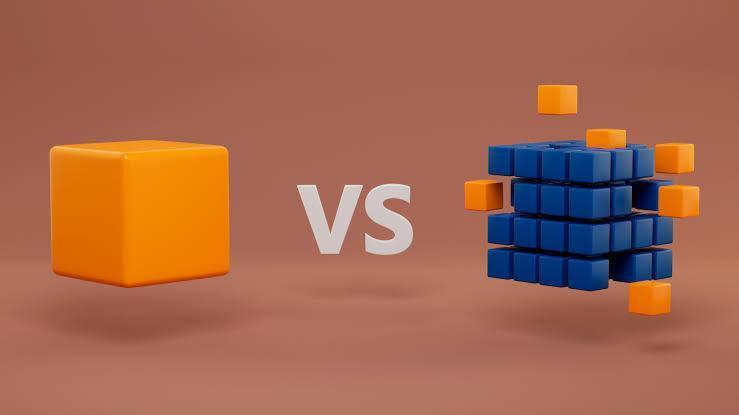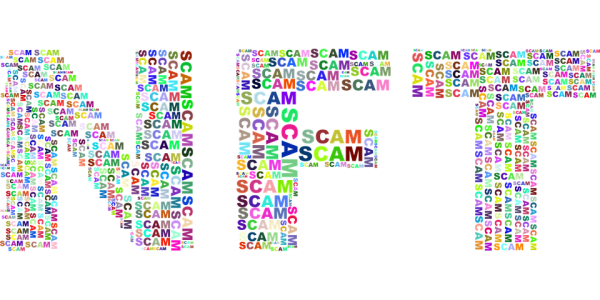October 31, 2023
By Anjali Kochhar
The blockchain technology is one of the most pioneering inventions in today’s world. Understanding the importance of accurate and timely knowledge exchange for businesses within this digital world, blockchain was designed to record transactions and keep track of business assets on an immutable ledger shared across networks.
The traditional blockchain architecture used by the first wave of public cryptocurrencies, such as Ethereum and Bitcoin, are monolithic. In a monolithic blockchain, all essential components and functions of the blockchain system are tightly integrated into a single, unified system. This all-in-one system performs all of the essential tasks that are necessary for a blockchain, including consensus, data availability, execution, and settlement.
While these early monolithic blockchains paved the way for the development and adoption of blockchain technology, they have faced various challenges such as scalability issues and limited flexibility. The traditional blockchain often struggle with scalability issues as they grow. They also usually operate in isolation, making it challenging to interact with other blockchain networks or external systems leading to barriers in data sharing. One of the biggest shortcomings of the traditional monolithic blockchain is that in order to upgrade one module or make any changes, the core components need to be upgraded and changed, making it a risky and tedious task. This is where the modular blockchain technology can be a trailblazing innovation. In order to change or adapt to evolving needs and technologies, a modular architecture can become of paramount importance.
What is a Modular Blockchain?
A Modular Blockchain is a type of blockchain technology with a unique architecture. It is designed with a component-based structure, where various different components and modules are used to construct the entire blockchain. Each of these interconnected modules are responsible for specific functions. This allows the blockchain modules to specialize in specific functions instead of trying to maintain all functions.
The reason behind the framework behind modular blockchains lies in the need for scalability and customization. This design divides the system into smaller parts that can be customized, replaced or changed without disruption to the entire blockchain. This architecture of the modular blockchain is highly efficient and optimized as it allows increased flexibility, efficiency, adaptability and scalability. It allows allows a more widened access to the network, which was another issue with the monolithic blockchain. This allows multiple people to check and track the data and ensure a higher efficiency.
As layer-one (L1) blockchains strive for scalability, the invention of modular blockchains has allowed the blockchain technology to address multiple issues and restrictions. With the advent of rollups, monolithic blockchains such as Ethereum are scaling in a modular fashion.
Types of Modular Blockchains
The functions of modular blockchains differentiate them from one another. The four categories of modular blockchains are as follows:
1.Execution: The purpose of these blockchains is to handle and carry out transactions, ensuring accurate and secure processing of data, operations and code. Users can interact with this layer by signing transactions and transferring assets. This layer allows allows users to deploy smart contracts.
2. Data availability: These modular blockchains’ main purposes are to store transactional data for use by other blockchains and to ensure that historical data is available upon request. This layer ensures that data is updated and accessible across the network for one to download.
3. Consensus: This layer is essential for establishing the validity of transactions. A network of complete nodes makes up the consensus layer. Together, they download and verify transactional data from blocks to come to an agreement on whether the block’s state is legitimate.
4. Settlement: Verification of transactions, block ordering, dispute resolution, and transaction verification are all done by a modular blockchain with a focus on settlement. This layer ensures no one can alter the settled transactions.
Advantages of Modular Blockchains
Modular blockchains have emerged as a transformative approach to blockchain design, addressing the limitations of the traditional, monolithic blockchain. Modular blockchains address the challenges that arise as blockchain networks expand, including increasing hardware expenses, centralization risks, and limited scalability. By breaking down the blockchain into interchangeable modules, these systems provide a range of advantages, including enhanced scalability, customization, and adaptability. Some of the advantages of the modular blockchains are:
Scalability
The “blockchain trilemma,” which holds that a blockchain can only accomplish two of three qualities—decentralization, security, and scalability—limits the scalability of blockchains. Most of the time, security and decentralization take precedence, which results in a blockchain network with poor throughput and expensive transaction fees (e.g., Ethereum). The monolithic blockchain has a major scalability issue due to its architecture of all functions being carried out at the same time on the same system.
However, the modular blockchain addresses the scalability issue effectively. In order to boost transaction throughput and network capacity, modular blockchain systems offer the flexibility to employ various scaling solutions, such as sharding, sidechains, or layer 2 protocols. With the unique architecture of modular blockchain they can seamlessly expand to meet growing demands without compromising security or decentralization.
Sovereignty
Modular blockchains grant users the sovereignty to tailor the technology to their unique needs while preserving the core principles of decentralization and trust. For instance, there are a few guidelines that you must follow if you want to build a layer-two (L2) chain on Ethereum, such as using the Solidity programming language for your code. This allows the company to have enhanced autonomy and self-determination,
Shared Security
In modular systems, individual modules can rely on the collective security of the entire network, enhancing the resilience against potential attacks. This shared security model minimizes the risk of vulnerabilities in one module affecting the entire system. It also allows the developers to change and improve specific modules without compromising the security of the network.
Blockchain is one of the pioneering technologies being developed and has immense potential. Modular blockchain address various limitations of the traditional blockchain design, enhancing efficiency, security, flexibility, and interoperability. This trailblazing design allows organizations to tailor their blockchain solutions to specific use cases and respond to changing requirements with minimal disruption to the entire system. This will lead to a gradual but sure adoption of the modular design across the blockchain user platform, making the modular blockchain, a promising future.
About the author
Anjali Kochhar covers cryptocurrency stories in India as well as globally. Having been in the field of media and journalism for over three years now, she has developed a sharp news sense and works hard to present information that goes beyond the obvious. She is an avid reader and loves writing on a wide range of subjects.



